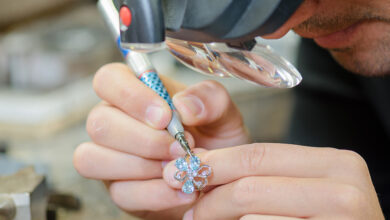6 Maintenance Tips to Keep Your Marine Battery in Top Condition

Owning a boat brings a sense of freedom and adventure, but it also comes with responsibilities. One of the most crucial aspects of boat ownership is taking care of your marine battery. A well-maintained battery will ensure that you never get stranded on the water and can enjoy your boating trips without any hiccups.
Here are some essential tips on how to keep your marine battery in top shape.
Perform Regular Testing
Regular testing is key to extending the life of your marine battery and preventing any unpleasant surprises. Using a maintenance charger when your boat is not in use can help charge and maintain the battery, ultimately extending its lifespan.
Make sure to follow the instructions provided with the maintenance charger to ensure proper usage.
Learn to Safely Jump Start the Battery
If you ever find yourself with a dead battery, knowing how to safely jumpstart is crucial. Start by ensuring good ventilation to avoid exposure to any fuel fumes. Next, troubleshoot the connections and wires to rule out any issues.
To jumpstart the battery, you’ll need a reliable jump starter. Refer to the instructions that came with your jump starter or check the manufacturer’s website for tutorial videos. You can use another boat, a car battery, or Power Steering Pumps for the jump start
Know the Right Way to Store the Battery
Proper storage during the off-season is essential for the longevity of boat batteries. Always store the battery in a cool and dry location. The specific care required may vary depending on the type of battery you have. To keep your battery in good condition, check the manufacturer’s guidelines and keep it fully charged.
Extreme temperatures, both hot and cold, can adversely affect the battery’s performance, so ensure you store it in a dry and moderately temperature-controlled environment.
Check Instructions for Recharging
Damaging the battery during the recharging phase is a common mistake made by boat owners. Always follow the instructions and specifications provided by the battery manufacturer. Using too much high voltage can lead to sulfation, faster discharges, and corrosion.
You can avoid overcharging by installing an onboard charger. Having the right gear while on the water ensures you are prepared, and your battery remains in good shape.
Regularly Clean the Batteries
Maintaining a clean marine battery is also crucial for optimal performance. Use baking soda paste to clean the terminals and battery case, as it neutralizes any acid. If you have conventional batteries, check the fluid levels and fill them with distilled water if necessary.
Cover the positive terminal with a terminal cover to prevent arcing, shocks, corrosion, and sparks. Grease the terminals with dielectric grease, to ensure proper function. Also, make sure your battery is securely fastened to prevent any vibration-related issues.
Use the Right Charger
Using the correct marine battery charger is essential for maintaining your battery’s health. Always follow the manufacturer’s recommendations when selecting a charger. Charging the battery for the appropriate amount of time is equally important.
Undercharging can lead to sulfation, while overcharging can shorten the battery’s lifespan. Choosing an approved charger and monitoring the charging time will help keep your battery in optimal condition.





